Navigating the intricate dance of the open road requires more than just a keen sense of direction or a well-tuned vehicle. The language of the road is spoken through its signs, each designed to guide, warn, and inform drivers, ensuring a safer journey for all. Whether you’re a seasoned driver needing a refresher or a newbie just starting to explore the highways and byways, understanding road signs is paramount.
In this blog post, we delve into 20 essential road signs, unraveling their meanings to empower you with the knowledge needed for a confident and safe driving experience. Buckle up and join us on this enlightening journey to master the road!
Road Signs
Road Signs: Road signs are symbols or devices erected alongside or above roads to provide information or instruct road users. They primarily communicate specific regulations, warnings, guidance, or other information to drivers and pedestrians. Road signs typically use distinct shapes, colours, and symbols to convey messages quickly and uniformly, even when language barriers exist.
Importance of Road Signs
- Safety: One of the primary purposes of road signs is to promote safe driving. Road signs reduce the risk of accidents and injuries by notifying drivers of speed limits, curves, pedestrian crossings, and more.
- Regulation: Road signs are pivotal for enforcing traffic laws. Signs like “No Parking,” “Stop,” and “Yield” directly guide drivers on what they must or mustn’t do.
- Efficiency in Traffic Flow: Directional signs, lane markers, and signs indicating turns, merges, or exits help in maintaining a smooth and organized flow of traffic. Roads would be chaotic without these indicators, with drivers uncertain where and how to move.
- Information: Signs provide valuable information, like distances to upcoming towns or cities, nearby amenities (like gas stations, hospitals, or rest areas), and the names of roads and highways.
- Guidance for All Road Users: While many road signs are geared towards drivers, they also provide essential information for pedestrians, bicyclists, and motorcyclists. Crosswalk signs, bike lane indicators, and more ensure all road users can navigate safely.
- Environmental Protection: Some signs indicate environmentally sensitive areas or wildlife crossings. These signs help reduce human impact on these regions and protect native flora and fauna.
- Consistency and Predictability: Because many road signs are standardized within countries and, to some extent, internationally, they offer consistency that makes roads more predictable for users. Whether you’re a local or a foreigner, understanding basic road signs can help you navigate unfamiliar roads more safely.
Road signs play a crucial role in ensuring all traffic’s safe, efficient, and orderly movement, reducing the potential for accidents and confusion. They are foundational to modern road systems.
20 Road Signs And Their Meaning
Road signs are critical for maintaining road safety, guiding drivers, and providing necessary information. Different countries might have some variations in their road signs, but many symbols and colors have been somewhat standardized. Here are 20 essential road signs and their general meanings:
1. Stop Sign

The stop sign, easily recognized by its octagonal shape and bold red color, is one of the most universal road signs. When drivers approach this sign, they must stop, regardless of the traffic flow. This means the vehicle should come to a complete halt, with the wheels no longer rolling. After stopping, drivers must yield to any other vehicles or pedestrians in the intersection or roadway before proceeding.
2. Yield / Give Way
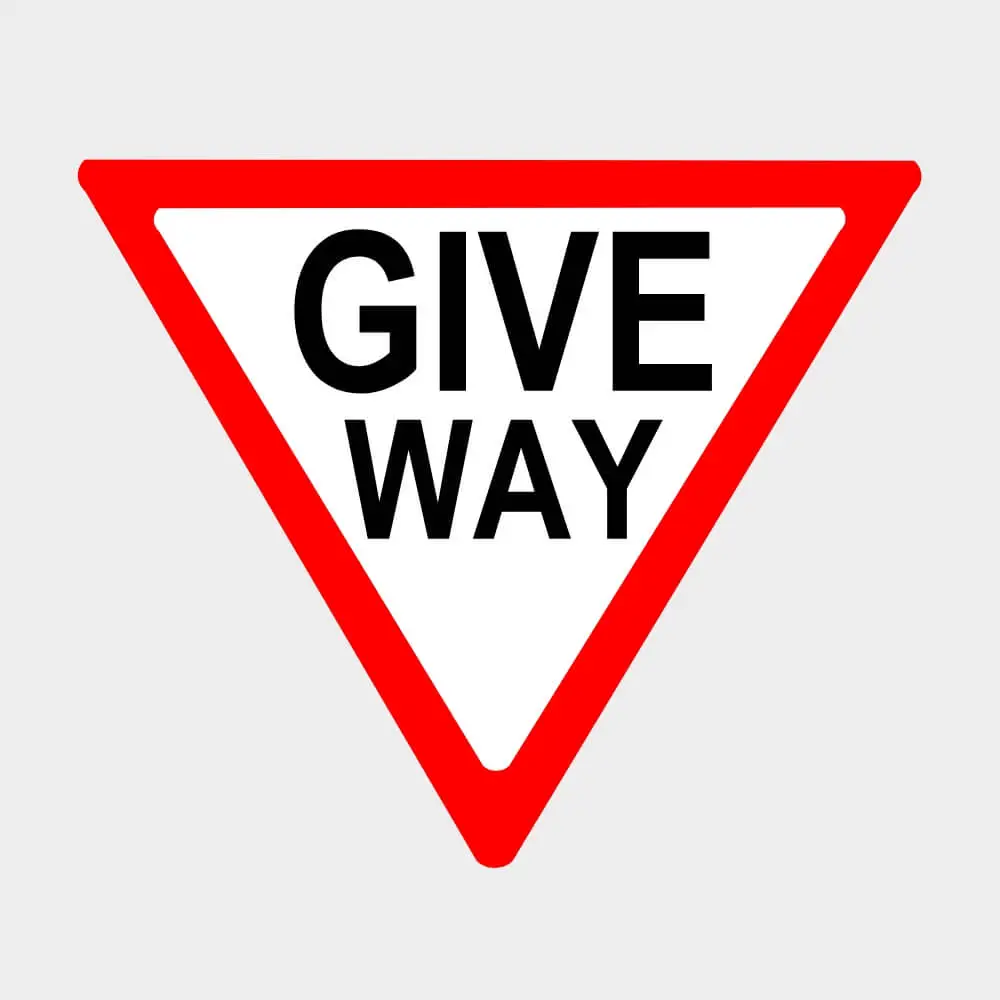
The yield or give way sign, characterized by its inverted triangle shape with a red border, warns drivers. Rather than demanding a complete stop, it instructs drivers to slow down and prepare to give way to other vehicles or pedestrians. Drivers should only proceed when they are certain it’s safe, ensuring they won’t disrupt other traffic flows.
3. Speed Limit
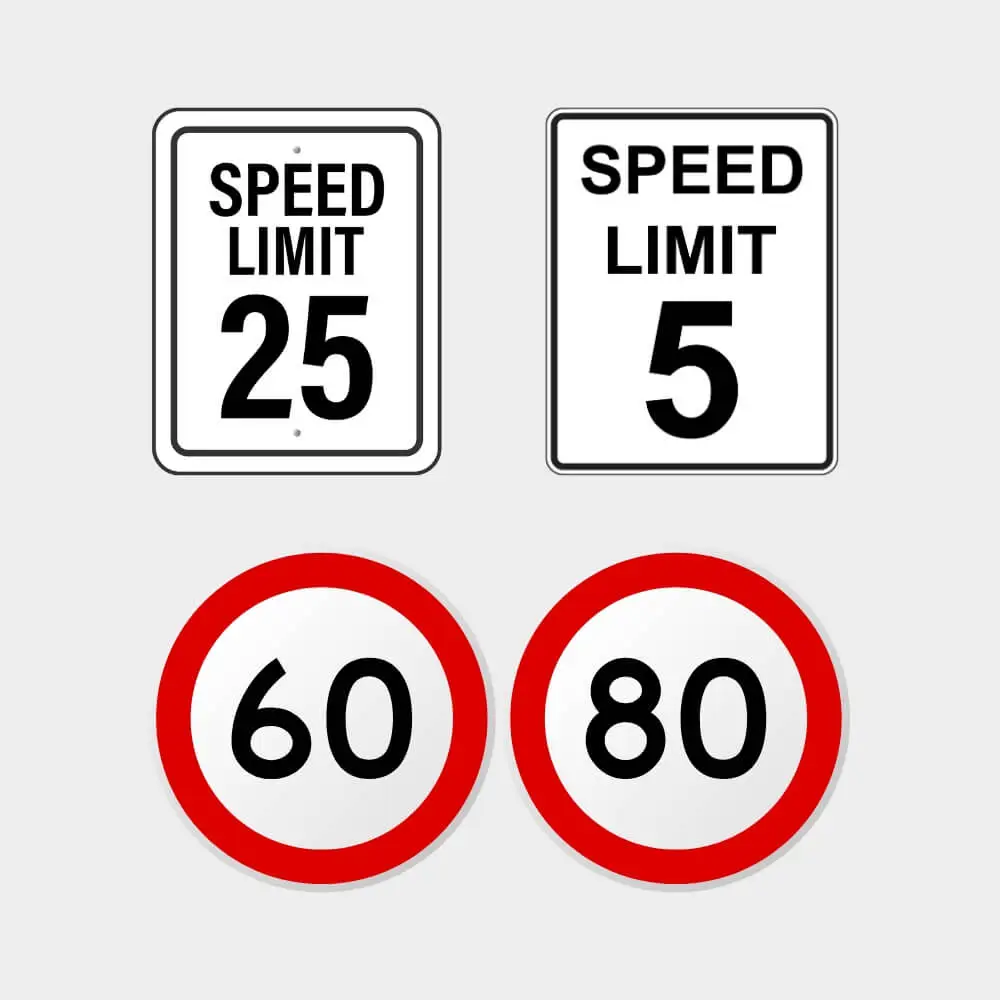
Typically round or rectangular, speed limit signs prominently display a numerical value. This number indicates the maximum permitted speed for that specific stretch of road, ensuring safety and proper traffic flow. Depending on the country, the speed can be represented in miles per hour (mph) or kilometers per hour (km/h). Adhering to these limits is essential not just for safety but also to avoid penalties or fines.
4. No Entry
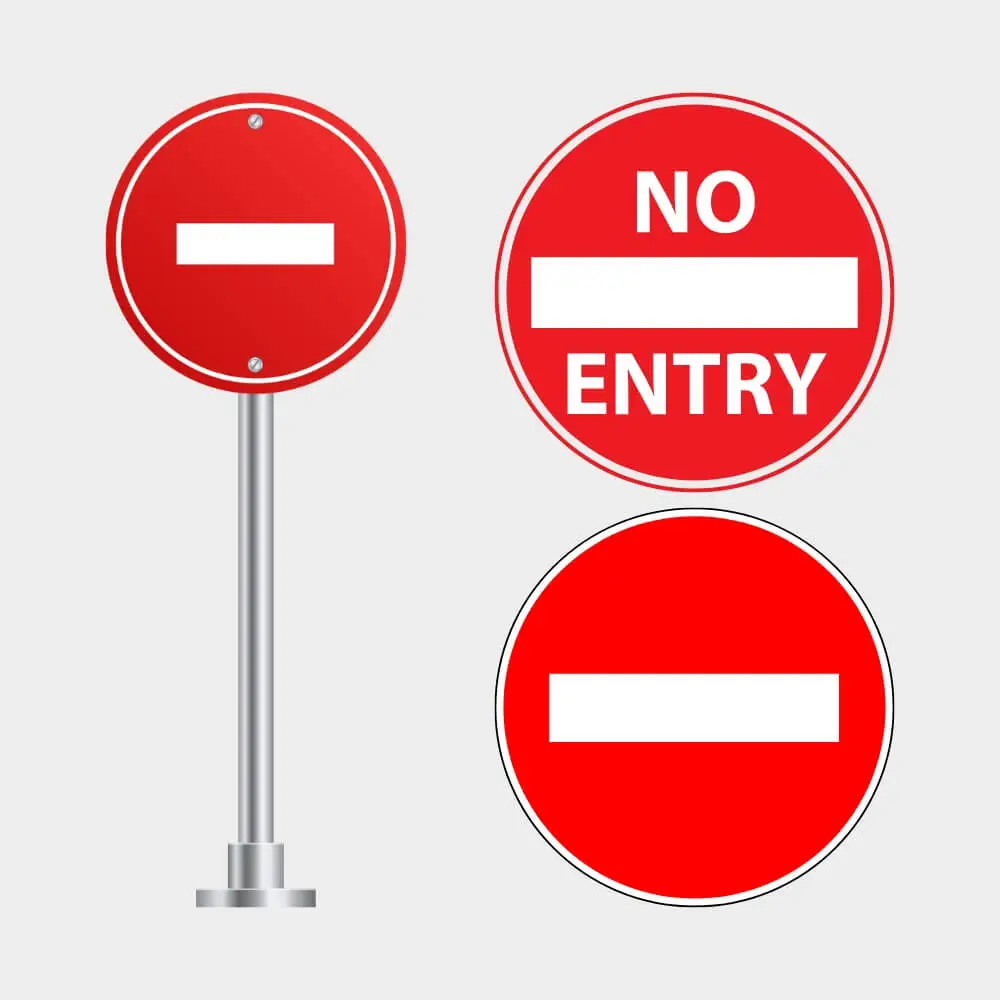
This sign, a bold red circle with a white horizontal line across its center, is a straightforward command. It signals to drivers that they are not allowed to proceed or enter a particular road or area. Such signs are often found at one-way street exits, closed roads, or certain restricted zones.
5. Pedestrian Crossing
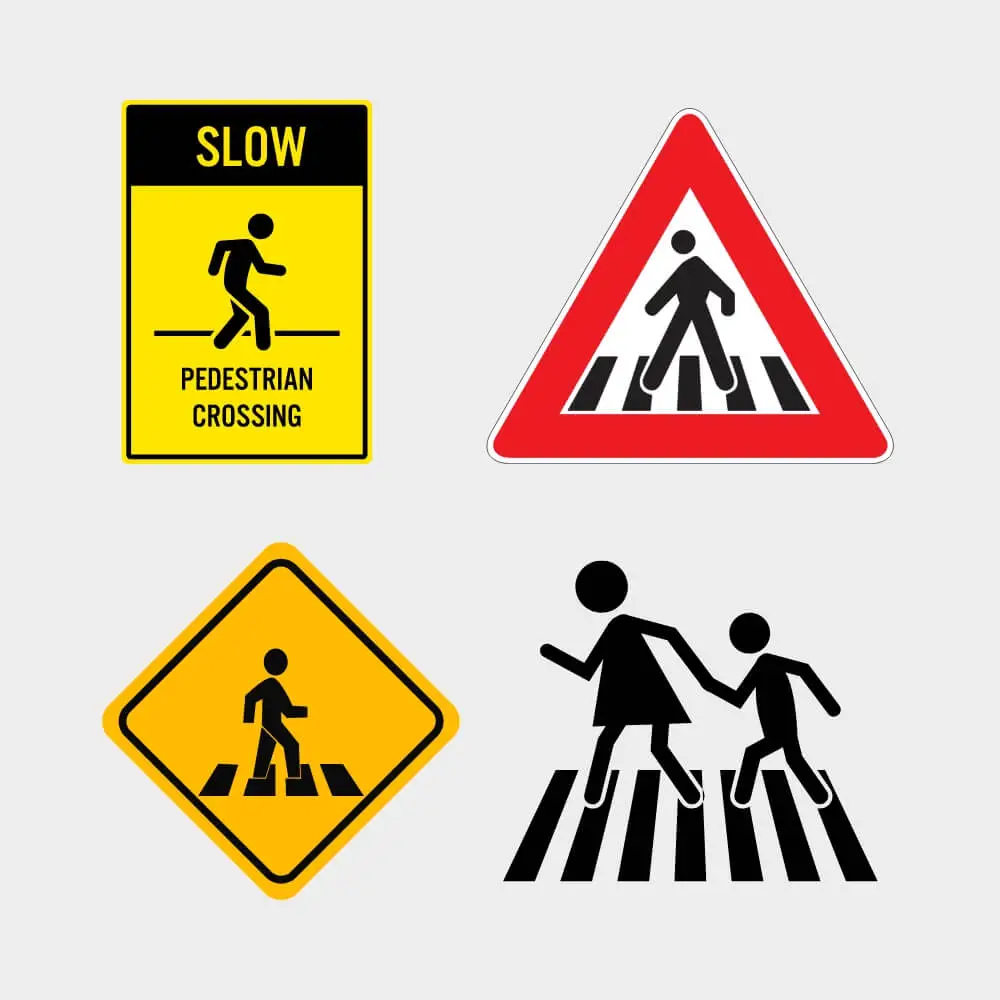
Often marked with an icon of a person walking, the pedestrian crossing sign alerts drivers to areas where people may be crossing the road. These areas require drivers to be vigilant and prepared to stop to allow pedestrians to cross safely. They are common near shopping areas, schools, and other places with high foot traffic.
6. School Zone
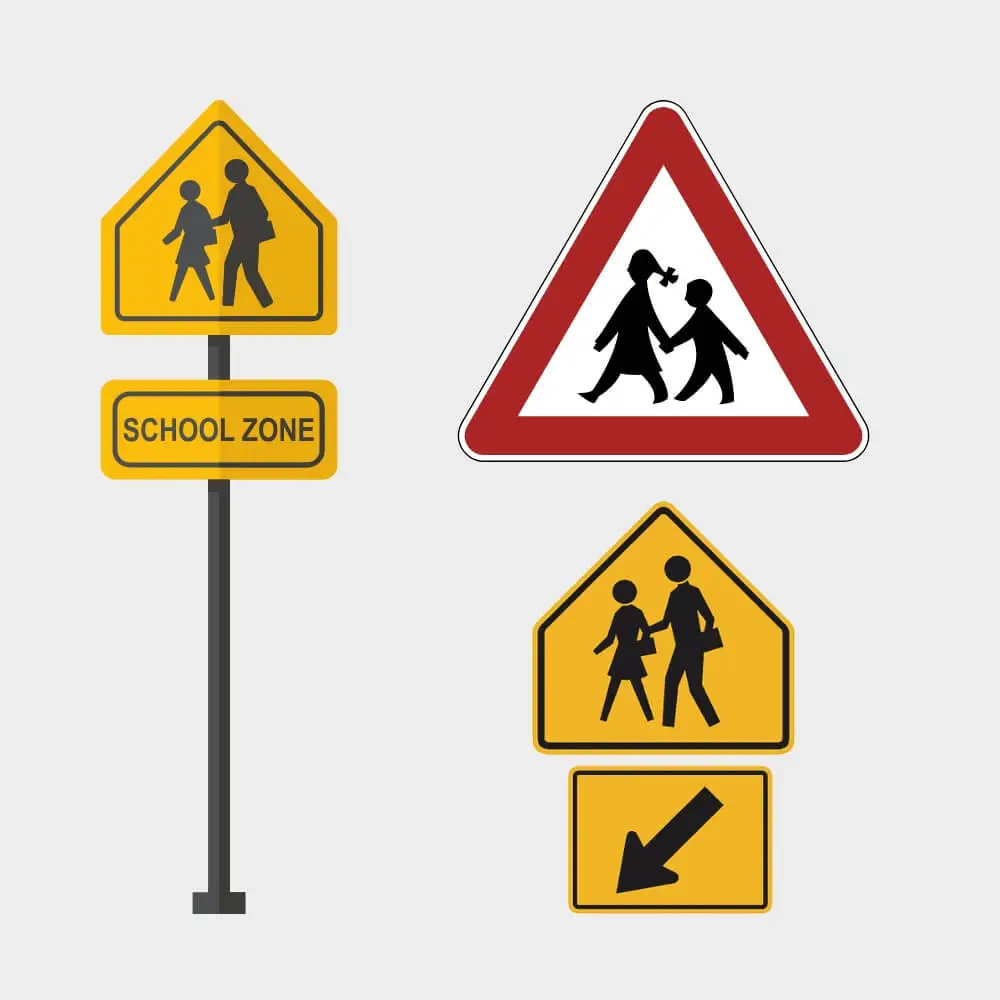
This sign, which often features an image of two children walking or a related symbol, signifies proximity to a school. Due to the potential presence of children – sometimes unpredictable – drivers are advised to be extremely cautious, often driving at reduced speeds. Some school zone signs also have flashing lights to further signal drivers to reduce their speed during school hours.
7. No Parking
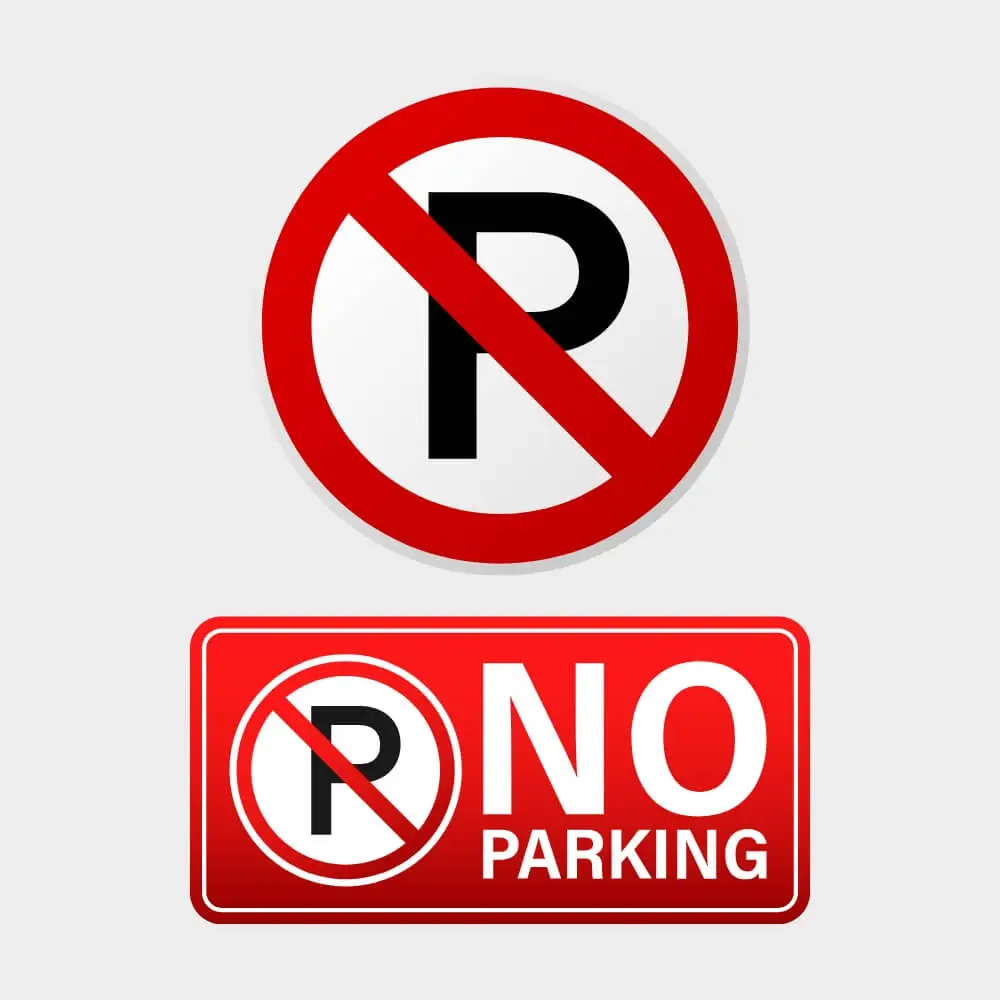
A no-parking sign clearly directs drivers that they are not allowed to park their vehicles in that area. These zones could be reserved for specific purposes, such as loading zones or near intersections, crosswalks, or fire hydrants where parked vehicles could obstruct visibility or access.
8. One Way
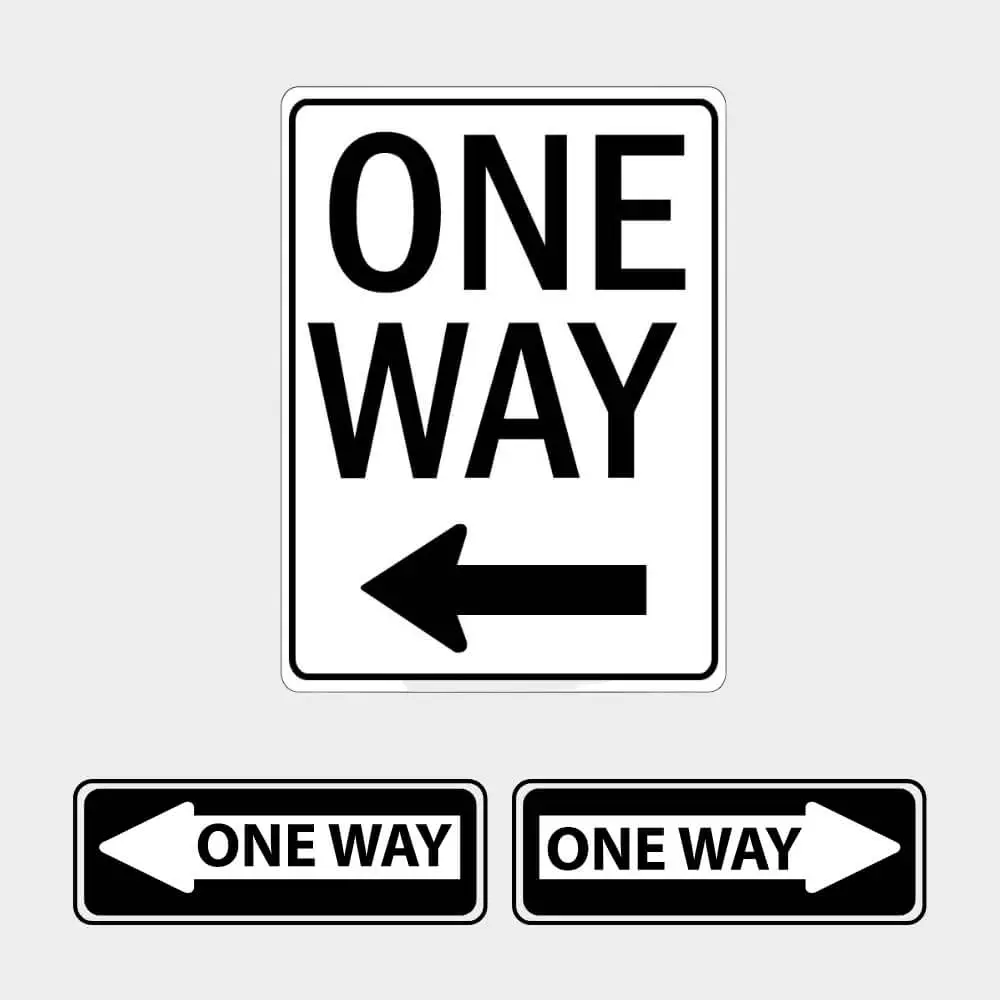
The one-way sign, featuring a black arrow on a white background, instructs drivers about the direction of traffic flow. Vehicles must move in the direction the arrow points, ensuring smooth and organized movement. Going against the flow on a one-way street can lead to accidents and is typically illegal.
9. Roundabout
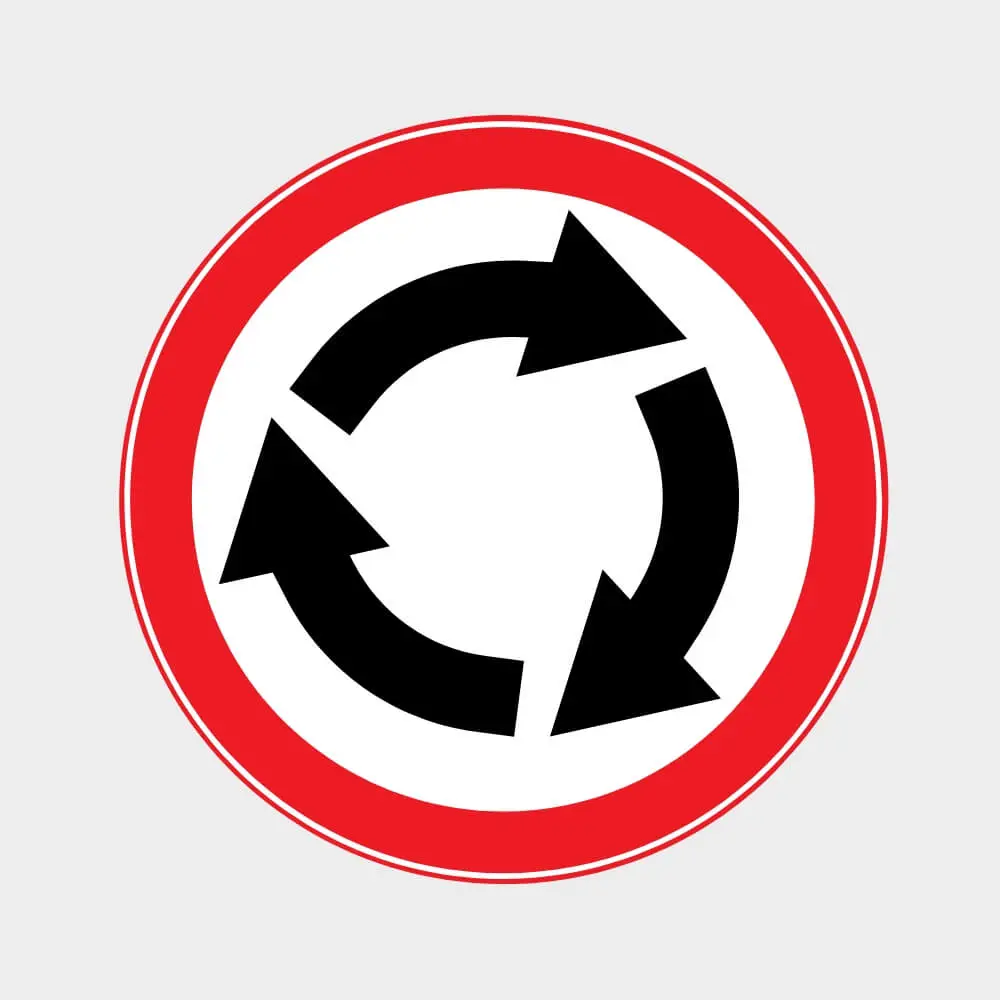
A sign depicting arrows in a circular pattern, the roundabout sign warns drivers of an approaching circular intersection. In a roundabout, traffic flows in one direction around a central island. Vehicles already in the roundabout generally have the right of way, and those entering must yield to them.
10. Railroad Crossing
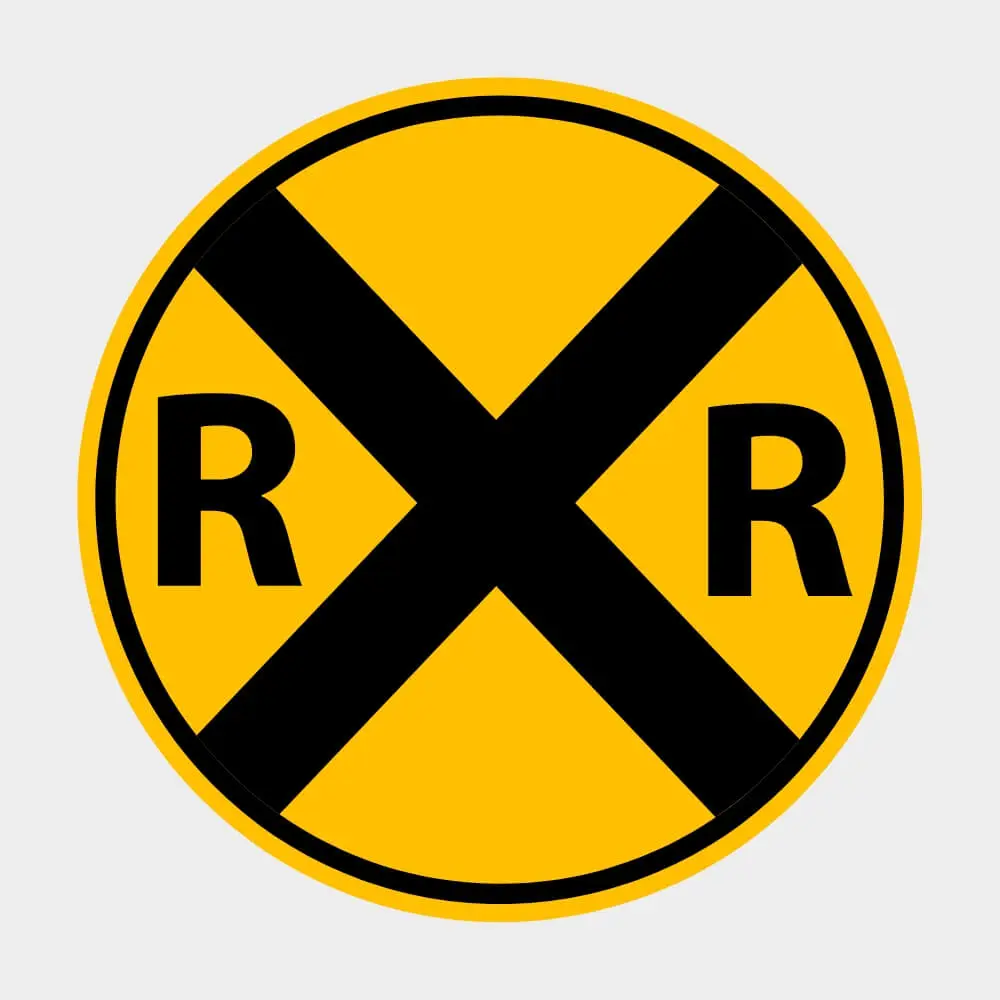
Recognizable by its “X” symbol, sometimes accompanied by an image of a train, this sign warns drivers of upcoming train tracks. It indicates being prepared to stop if a train is approaching. Some crossings also have lights and barriers that activate when a train is nearing, but not all do, so drivers should always exercise caution.
11. No U-Turn
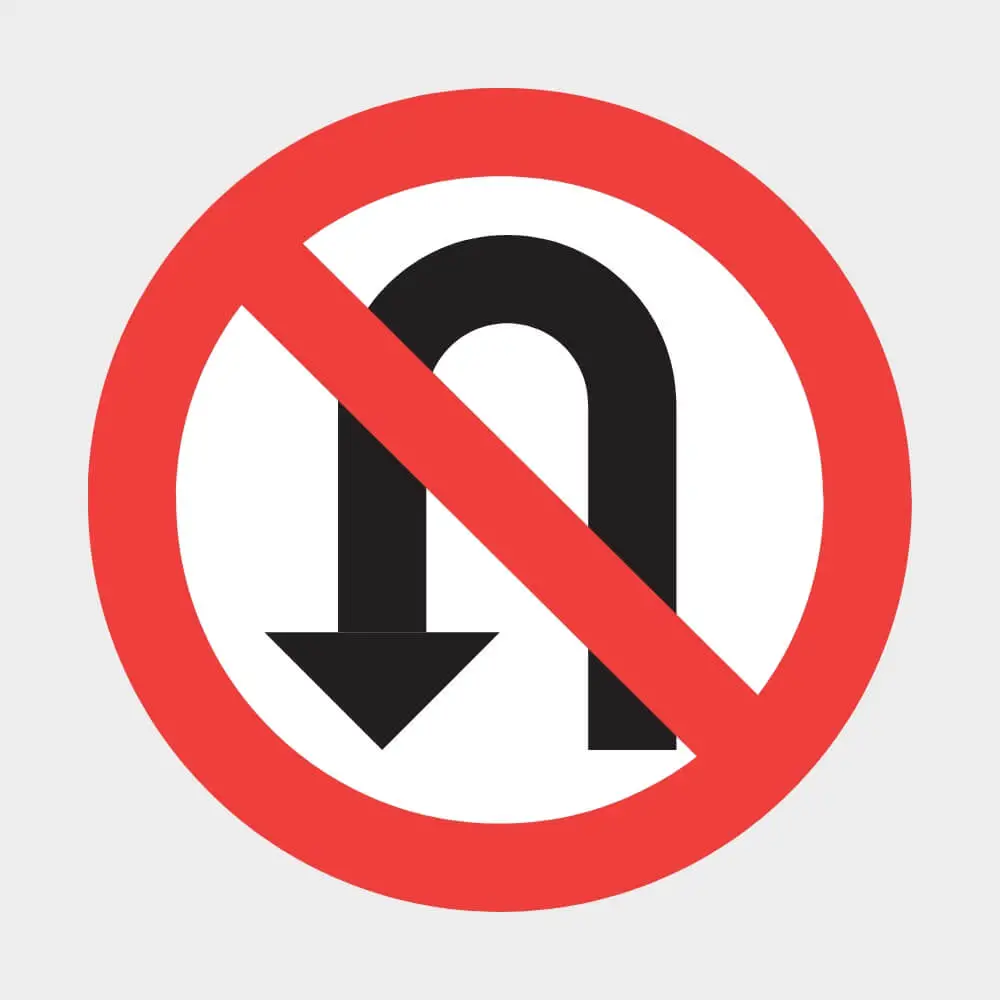
The No U-Turn sign, recognizable by its U-turn symbol enclosed within a red circle and slashed by a diagonal line, is a directive prohibiting drivers from making a 180-degree turn to reverse their direction on the road. This restriction can be due to various reasons like road layout, traffic flow, or specific hazards, ensuring that vehicles move smoothly and safely without the potential disruption and dangers associated with U-turns.
12. Slippery When Wet
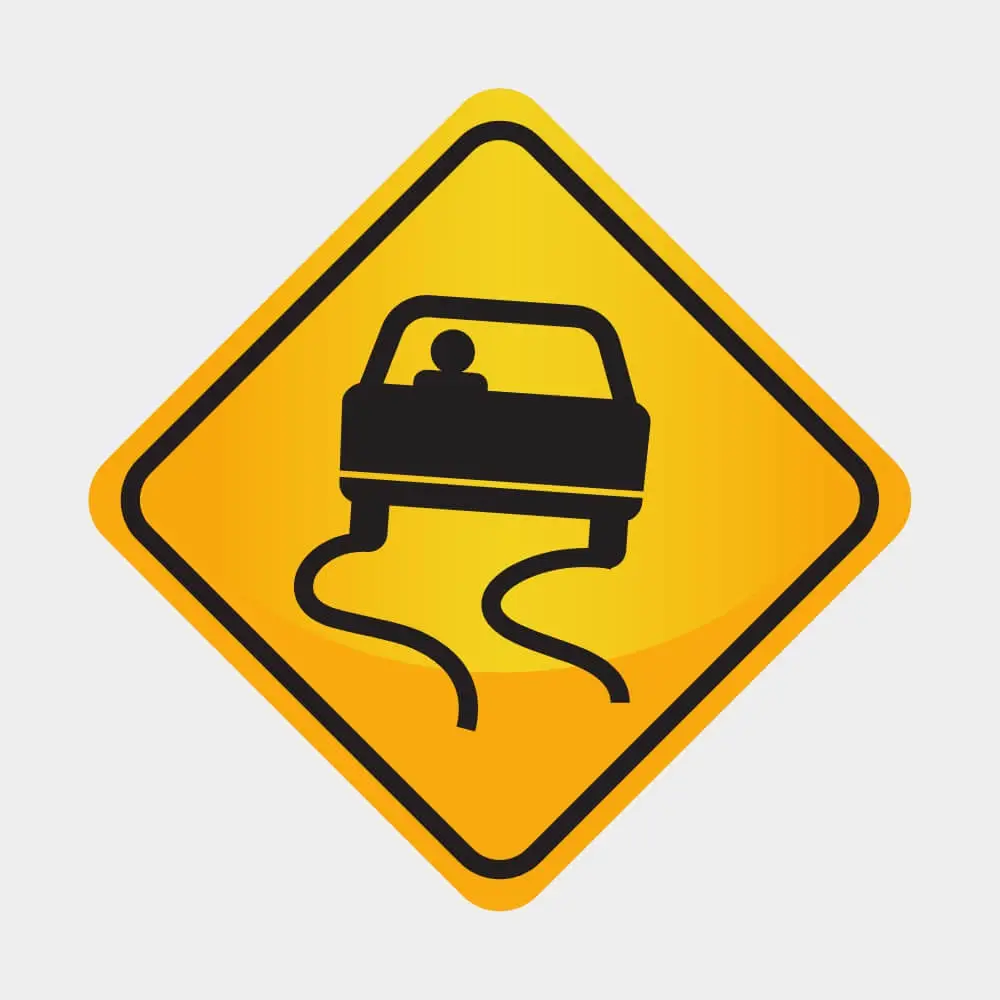
The Slippery When Wet sign showcasing a car skidding is a cautionary warning for drivers. It indicates that the specific stretch of road may become particularly slippery under wet conditions, such as after rainfall. Drivers encountering this sign are advised to reduce their speed and exercise extra caution, as the risk of losing control of the vehicle increases in such areas.
13. Two-Way Traffic
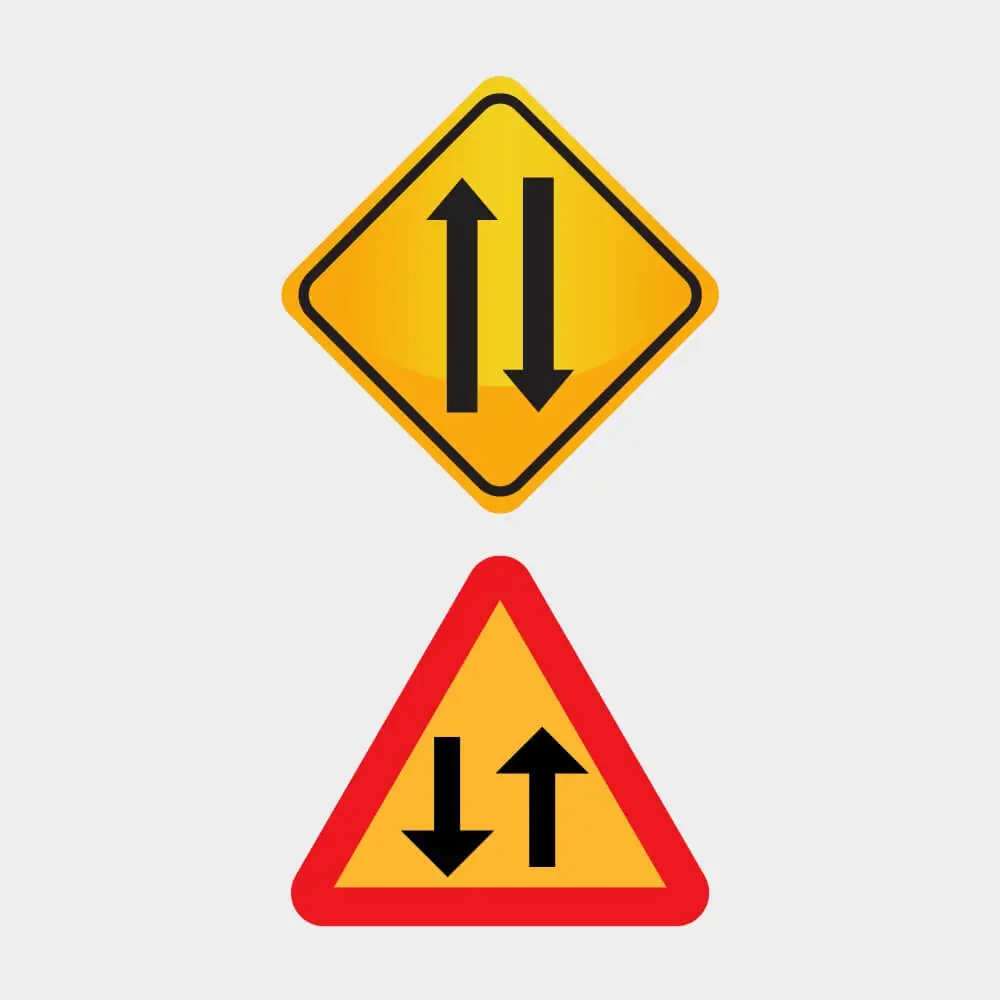
The Two-Way Traffic sign featuring two arrows pointing in opposite directions is an advisory notice to drivers. It warns them that the upcoming stretch of road accommodates traffic flowing in both directions. This sign is especially crucial in areas where drivers mistakenly assume it’s a one-way system, ensuring they remain vigilant and aware of oncoming traffic.
14. Curve Ahead
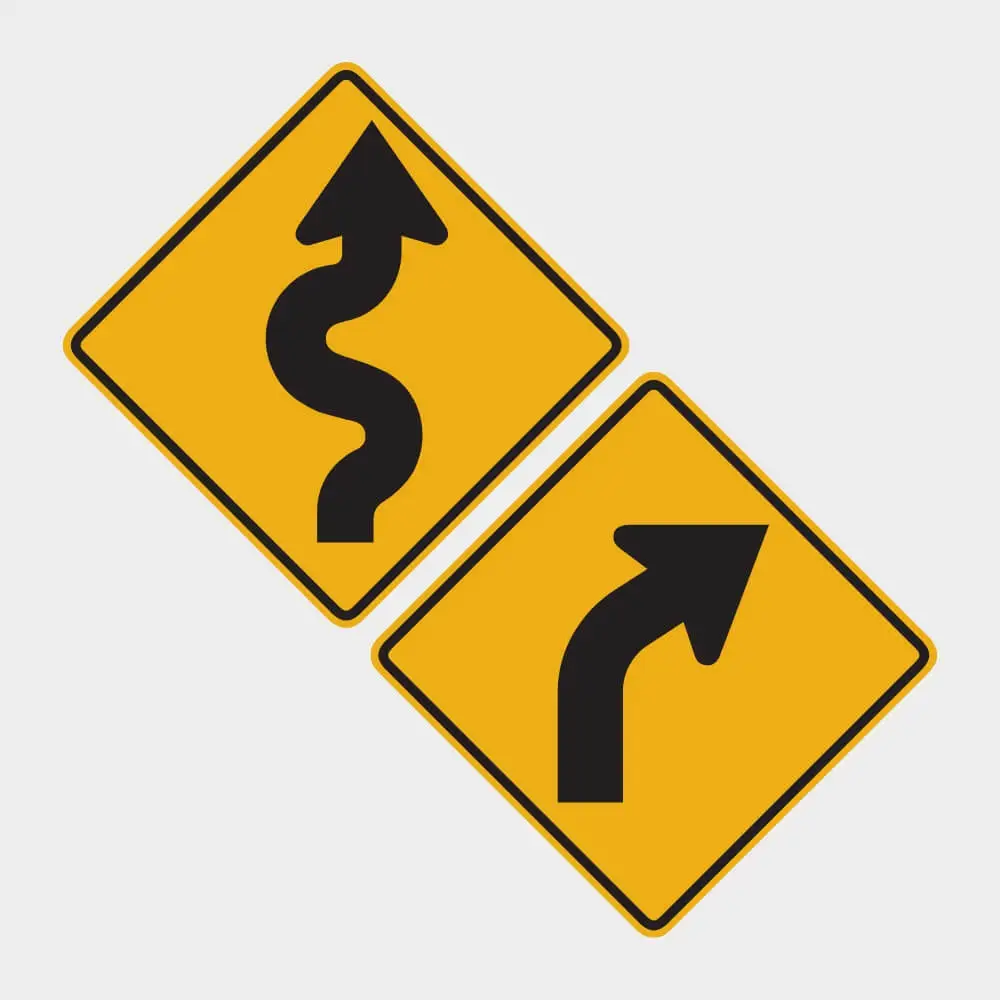
The sign with an arrow indicating a curve is a preemptive warning to drivers. It alerts them to an approaching bend or series of bends in the road. Recognizing this sign in advance allows drivers to adjust their speed appropriately, ensuring they navigate the curve safely without veering off the road or into the opposing lane.
15. T-Intersection
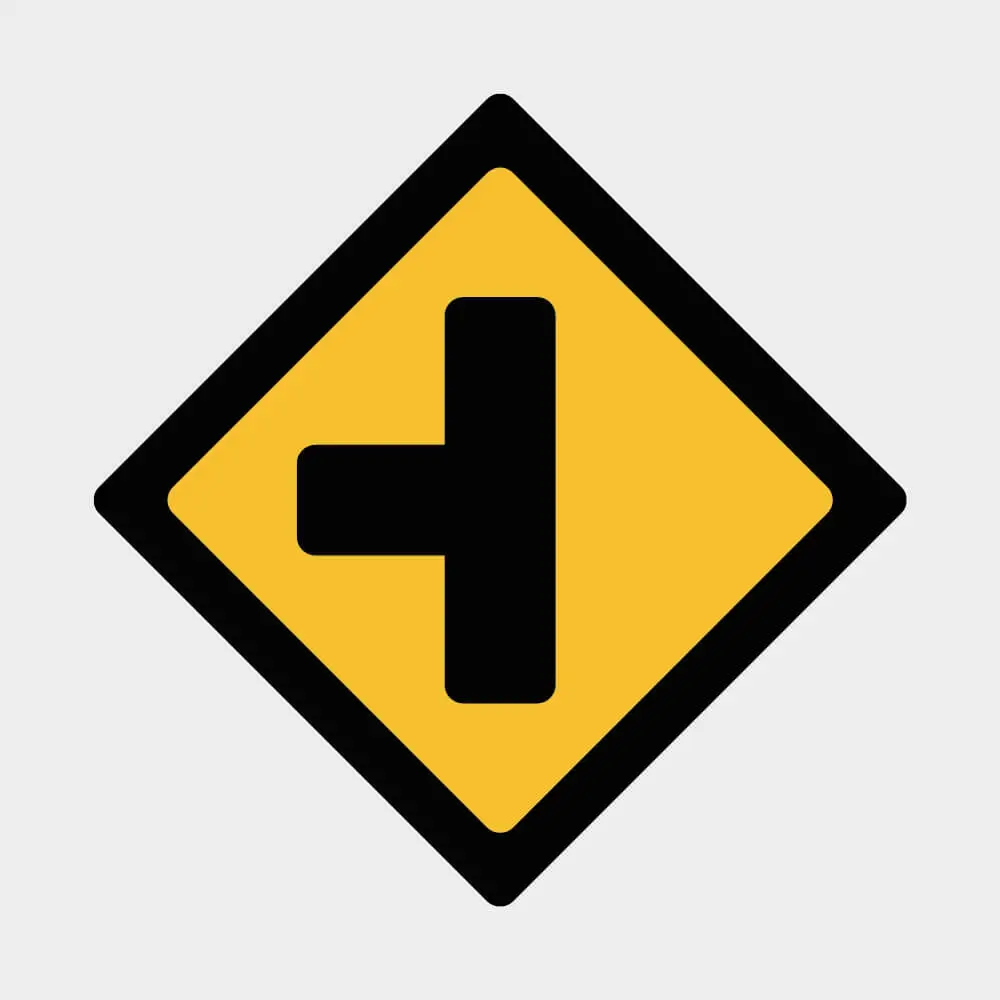
This sign informs drivers that the road they’re currently on doesn’t continue straight ahead and instead intersects with another road, forming a ‘T’ shape. As they approach this intersection, drivers must be prepared to turn left or right or give way to traffic on the intersecting road.
16. Animal Crossing
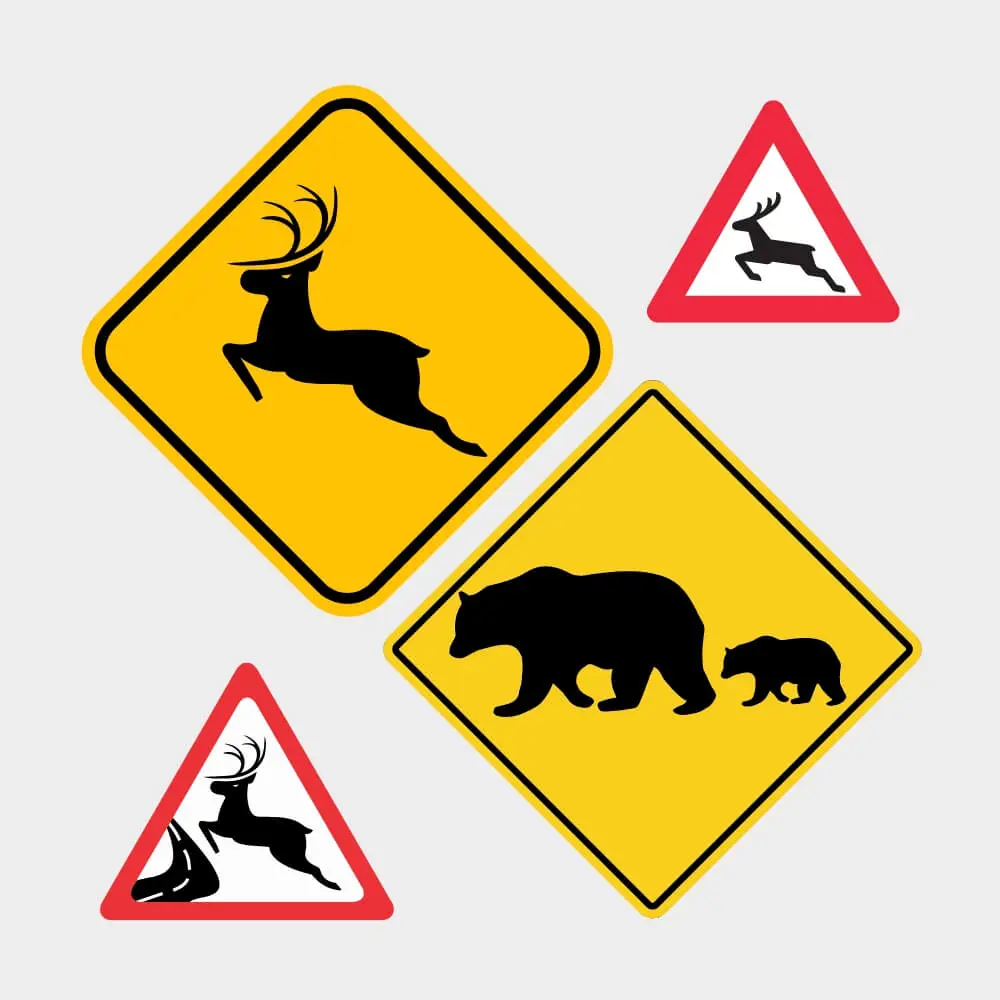
The sign that displays an animal image, such as a deer or moose, serves as a cautionary note for drivers. Such signs are typically placed in areas known for frequent animal movements. Drivers should be on the lookout for animals suddenly entering the roadway, especially during dawn or dusk when many animals are most active.
17. Bicycle Path
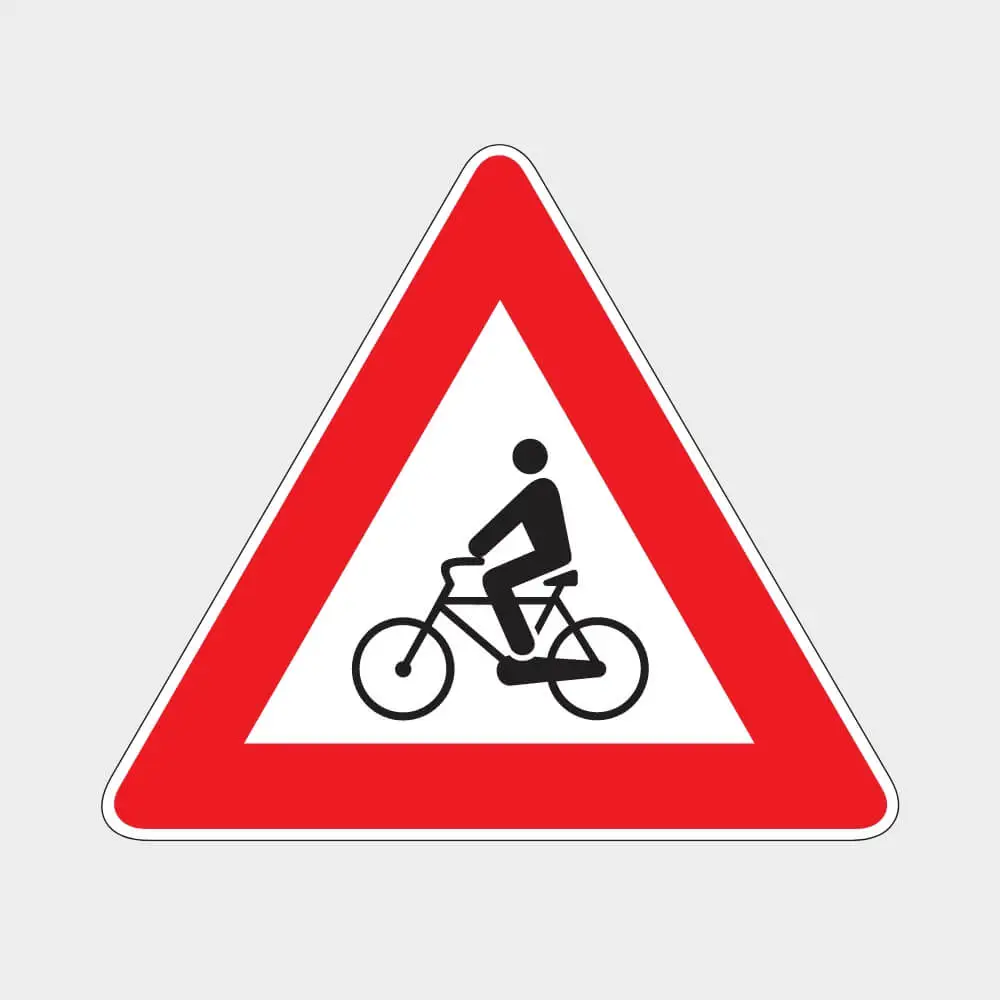
The sign with a bicycle symbol indicates that the lane or path is designated specifically for bicyclists. Motor vehicles are typically prohibited from these lanes, ensuring the safety of cyclists. Drivers should be cautious and check for cyclists before turning or crossing these paths.
18. No Overtaking/Passing
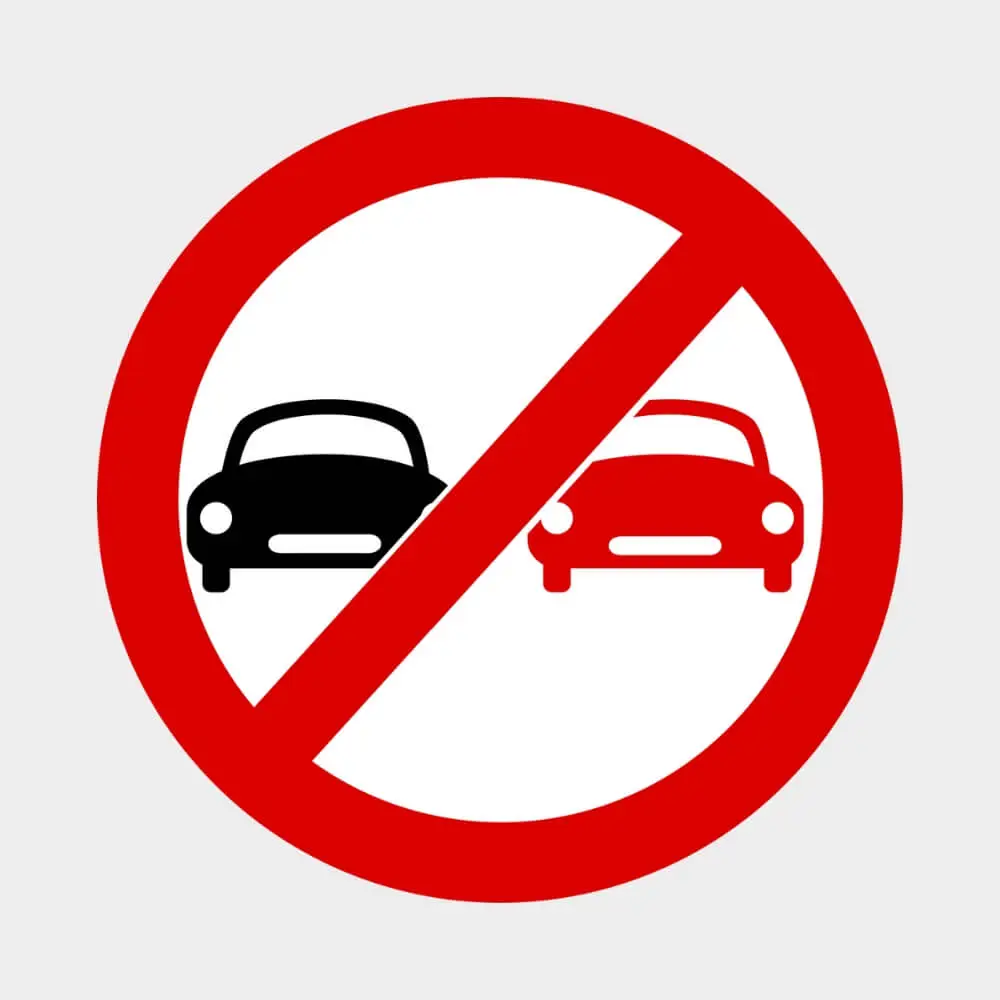
This sign, either rectangular with a diagram of cars or round with vehicles enclosed in a red circle, is a directive for drivers. It strictly prohibits them from overtaking or passing vehicles in certain areas. Such zones are often determined based on limited visibility, road configurations, or potential hazards, ensuring safe and orderly traffic flow.
19. End of Speed Limit
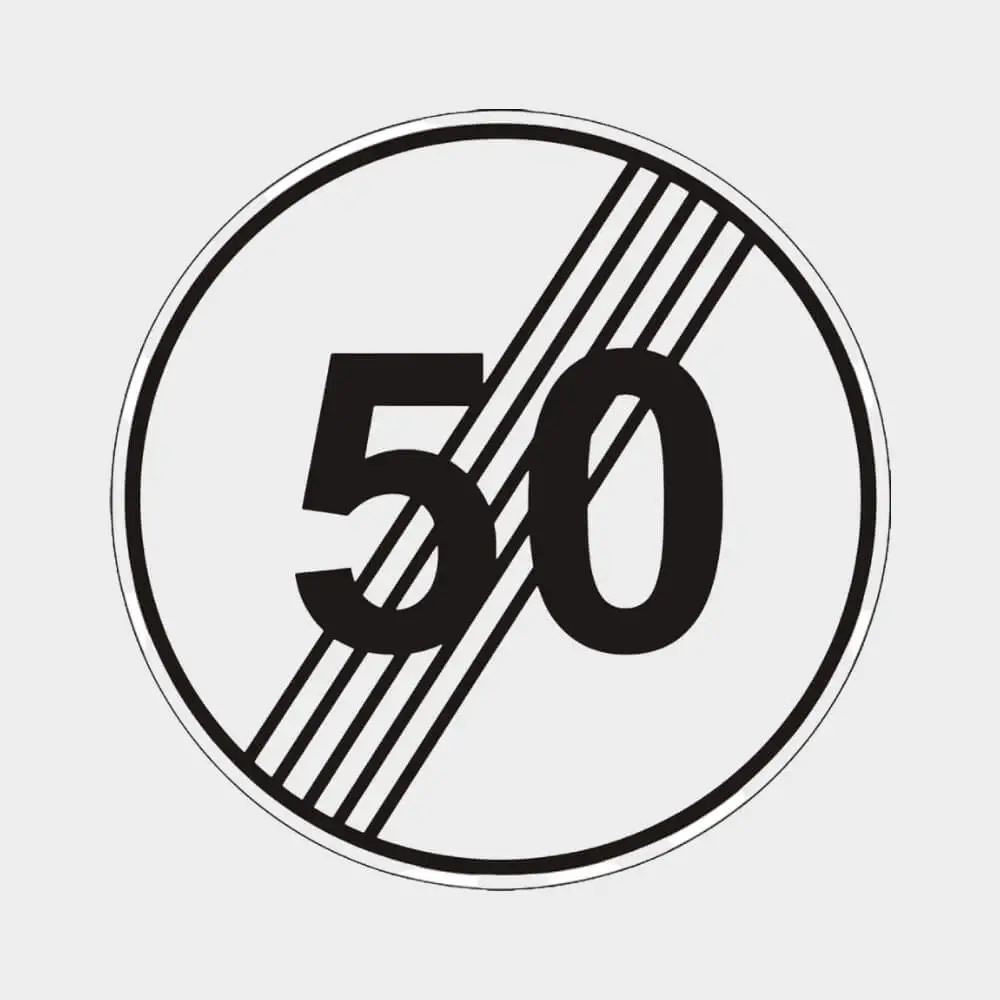
This sign is an advisory that informs drivers that a specific speed restriction has come to an end. It doesn’t necessarily mean that drivers can speed up recklessly; rather, they should adhere to the general speed limit for that type of road or area unless otherwise indicated.
20. Parking Area
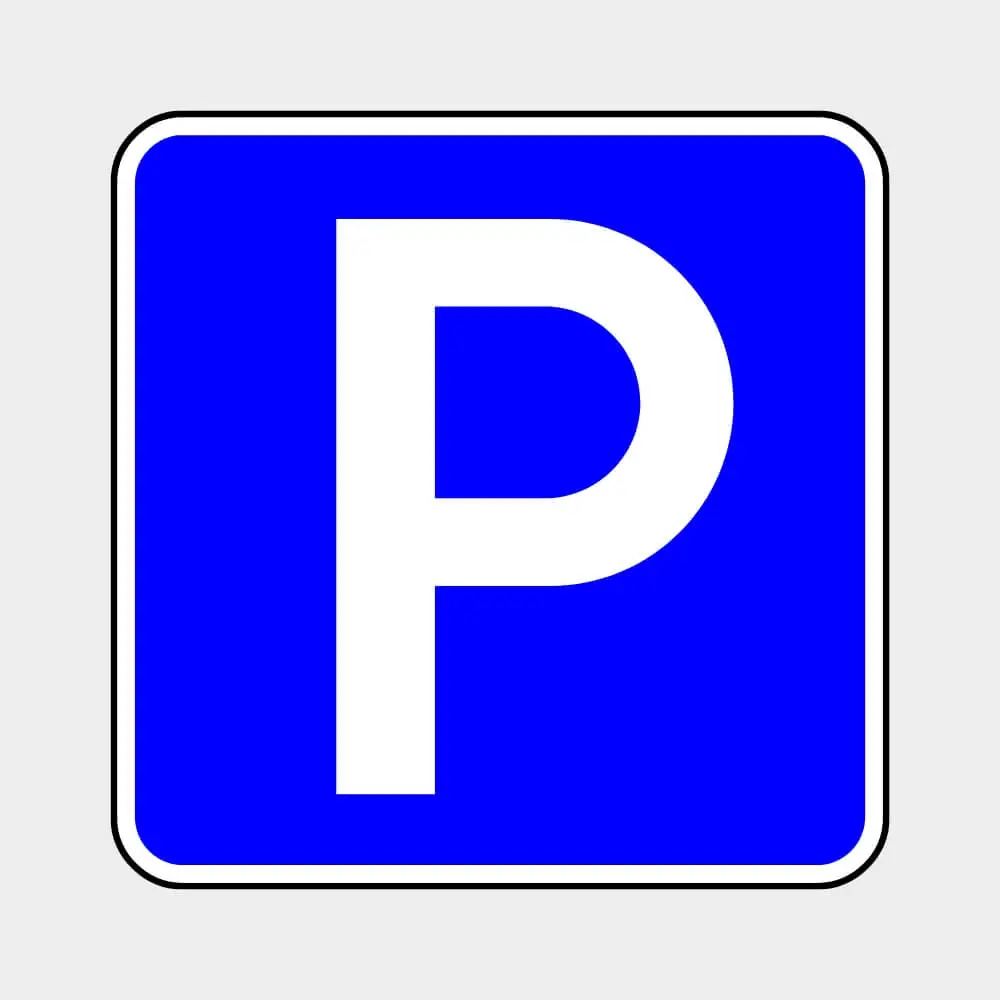
Simply put, this sign indicates a designated area where vehicles can park. These areas are earmarked for vehicle stops, ensuring drivers have a safe spot to leave without obstructing traffic or causing safety hazards. Depending on the specific area and regulations, they may be temporary stops or longer-term parking zones.
Consequence Of Not Following Road Signs
The consequences of not following road signs can be wide-ranging, impacting individual road users, communities, and society. Here are some of the potential outcomes:
- Accidents and Fatalities: Ignoring road signs can lead to accidents, some of which may be fatal. For instance, not adhering to a stop sign might result in a collision at an intersection.
- Traffic Congestion: Failing to observe signs, such as lane merging or directional indicators, can disrupt the smooth flow of traffic and cause congestion or bottlenecks.
- Legal Penalties: Many road signs indicate legal requirements. Disregarding them can lead to traffic citations, fines, or even the suspension of driving privileges in severe cases.
- Increased Risk to Vulnerable Road Users: Ignoring signs like pedestrian crossings or school zones can endanger vulnerable populations like children, the elderly, or people with disabilities.
- Damage to Infrastructure: Not adhering to weight limits on certain roads or bridges, as indicated by road signs, can cause damage to these infrastructures.
- Environmental Impact: Ignoring signs that indicate environmental zones or animal crossings can harm local ecosystems, wildlife, and protected areas.
- Higher Insurance Premiums: Repeated traffic violations due to ignoring road signs might result in higher driver insurance premiums.
- Lost or Delayed Drivers: Not following directional signs can lead to drivers getting lost, causing delays and possible further risks as drivers attempt to navigate unfamiliar areas.
- Potential Civil Liability: If a driver’s failure to observe a road sign results in injury or damage to another person or property, they may be held liable in a civil lawsuit.
- Decreased Road Efficiency: Roads are designed with a specific flow and order. When road signs are not followed, it compromises the intended efficiency, causing delays and reducing the overall effectiveness of transportation networks.
- Compromised Public Trust: Regularly ignoring or flouting road signs can erode public trust in the road system’s and fellow drivers’ efficacy, leading to a more aggressive or defensive driving culture.
- Economic Impact: Accidents and traffic congestion, both potential consequences of not following road signs, have economic implications. They can lead to increased healthcare costs, lost productivity, and delays in goods and services.
In summary, road signs are essential for the safety and efficiency of road networks. Ignoring them can have dire consequences, from personal harm to broader societal impacts. It is in the best interest of everyone – drivers, passengers, pedestrians, and communities – to heed the information and directives provided by road signs.

Effective Tips To Grip On Road Signs
Developing a firm grasp of road signs is crucial for safe driving. Here are some effective tips to help remember and understand them better:
- Start with Basics: Before diving into specifics, familiarize yourself with the basic categories of road signs: regulatory (commands or prohibitions), warning (alerts about conditions ahead), and informational (guidance, places of interest, services).
- Use Mnemonics: Create mnemonic devices or rhymes for certain signs to make them more memorable. For instance, “Red and octagon, means you must stop on.”
- Flashcards: Create or purchase flashcards with the image of the road sign on one side and its meaning on the other. Regularly test yourself until you remember each one.
- Interactive Learning: Various online quizzes and mobile apps help learners test their knowledge of road signs. Engage with these platforms for a fun and interactive approach to learning.
- Drive Regularly: The best way to familiarize yourself with road signs is to encounter them in real-life situations. Regular driving in varied settings will help reinforce your memory.
- Study the Driver’s Handbook: Almost every country or state has an official driver’s handbook or manual that contains all the road signs. Reading and re-reading this handbook is a surefire way to become familiar with the signs.
- Visual Association: Associate each sign with a vivid image or scenario in your mind. For instance, when you see the “slippery when wet” sign, you might visualize a car skidding on a wet road.
- Group Study: Discussing and quizzing road signs with friends or fellow learners can be beneficial. It allows for discussion, clarification, and a more interactive learning experience.
- Repetition: As with most learning, repetition is key. Go over the signs multiple times, especially those that are tricky for you.
- Stay Updated: Road signs can sometimes change, or new ones might be introduced. Regularly check for updates in your local driving regulations and familiarize yourself with any new signs.
- Drive in Different Environments: Urban areas, highways, rural roads, and regions might have different signs or variations. Driving in diverse settings will expose you to a broader range of signs.
- Associate Shapes and Colors: A sign’s shape and color often indicate its type or importance. For instance, red indicates a prohibition or warning, and octagonal shapes are universally used for stop signs.
- Take a Defensive Driving Course: Such courses teach driving techniques and offer comprehensive insights into road signs and their importance.
Remember, understanding road signs isn’t just about passing a driving test; it’s about ensuring your safety and the safety of others on the road.
Conclusion
In conclusion, the symphony of the streets is composed not just of vehicles and asphalt but of the silent sentinels that stand watch – the road signs. They provide an indispensable guidebook for our journeys, irrespective of how familiar or alien the paths might be. As drivers, it’s our responsibility to heed these signs, taking to heart the lessons they impart. This isn’t merely about adhering to the rules but about ensuring the safety and well-being of ourselves and others.
Every sign, from the simplest to the most complex, holds significance. We hope that by shedding light on these 20 pivotal signs, we’ve enhanced your understanding and appreciation of the road’s language. As you continue your driving adventures, may this newfound knowledge guide you towards more assured and secure travels. Safe driving to all, and may the road always rise to meet you!
You can visit the U.S. Department of Transportation or your local traffic authority for more detailed guidelines on road signs and traffic regulations.

